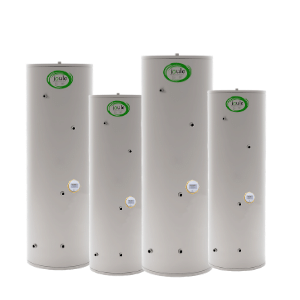blog

What is a Buffer Tank and How Does It Work With a Heat Pump?
Posted on 07 January 2021 in blog
BUFFER TANKS ARE USED TO CONTAIN A VOLUME OF HEATED WATER TO LIMIT CYCLING OF A HEAT PUMP.

If you're planning on getting a heat pump installed, you may have heard the term buffer tank being used. A buffer tank is often fitted with a heat pump to help limit the cycling of a heat pump. It's like a battery of energy that's ready to be distributed to any particular room of the home, so for example if you get home from work and you'd like the living room to be warmer, you'd adjust your thermostat in that one room and that 'emergency' energy is sent immediately rather than the heat pump having to cycle and heat up all the rooms in your home.
WHAT'S THE DIFFERENCE BETWEEN BUFFER TANKS, HOT WATER CYLINDERS AND THERMAL STORES?
Buffer Tank: A buffer tank is designed to help reduce cycling of a heat pump. It holds a circuit of heated water but it is 'black water' which runs through your heating systems such as radiators and underfloor heating. A buffer tank is used in conjunction with a hot water cylinder.
Thermal Store: A thermal store can be used with different heat sources such as solar thermal, solar pv, biomass and heat pumps so it can be useful if you plan to have one or more of these systems in place. Water does not come directly from the heat store, it is heated up by passing through a heat exchanger that transfers the heat from the thermal store water to the mains or tap water.
Hot Water Cylinder: A hot water cylinder is designed to hold usable hot water and serve it to your taps, shower and bath when required.
DO ALL HEAT PUMPS REQUIRE A BUFFER TANK?
No, not all heat pumps require a buffer tank. Inverter heat pumps, such as those in the MasterTherm Inverter range, consistently alter their output to meet demand. They work quietly in the background and then should you decide to turn on the heating in a different room in your house or increase the temperature, it will increase it's output to meet the new demand. You can learn more about inverter vs fixed output heat pumps in our dedicated article. It's worth noting that every heat system varies slightly, how it's designed will depend on the size and age of your home and how you plan to use it. For example if you'd like to install underfloor heating and would like a thermostat in every room to control the heating seperately, even if you had an inverter heat pump you'd still require a buffer tank as the volume of the heating pipes in just one room is too small to handle an increased output from the heat pump, the buffer tank works to let out only what's needed.
HOW BIG IS A BUFFER TANK?
A buffer tank will need to hold approximately 15 litres per 1kW of heat pump capacity. On average a typical 3 bed home will require an output of 10kW so this would require a buffer tank sized at approx 150 litres. If we look at the Joule Cyclone 150l cylinder, this is 1190mm tall with a diameter of 540mm. It weighs 34kg when empty and 184kg when full.
HOW MUCH DOES A BUFFER TANK COST?
Dependent on the size and the quality of materials used, a buffer tank can cost from £250 upwards, with the average cost for a residential property being around £450-£900.
 Facebook
Facebook LinkedIn
LinkedIn Twitter
Twitter













